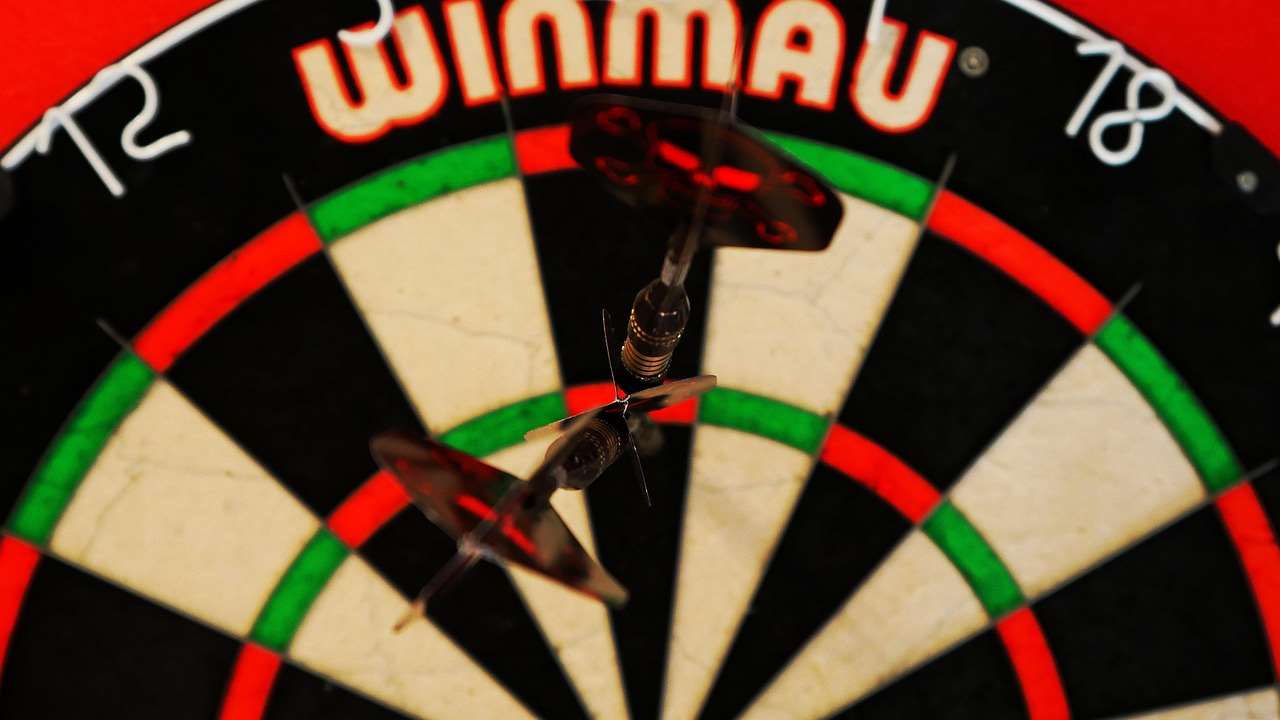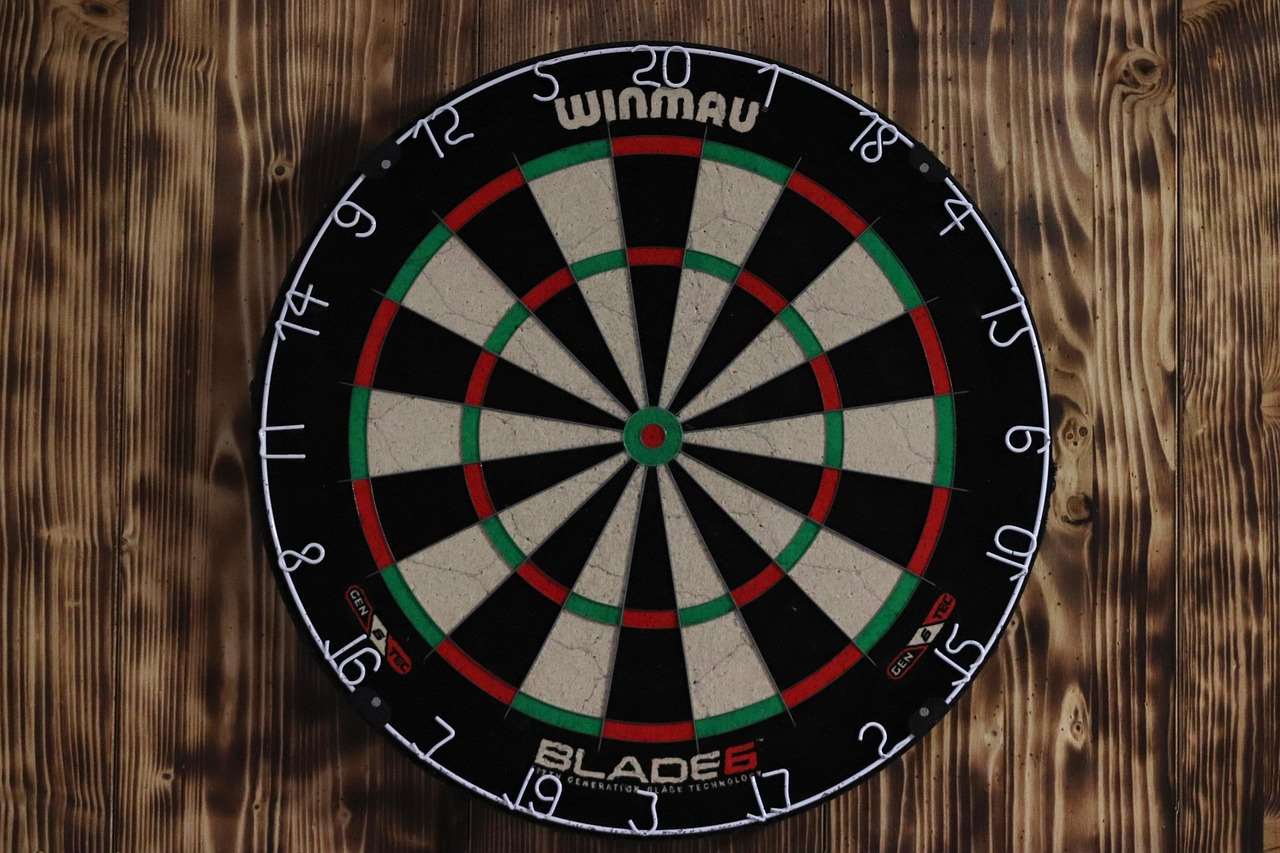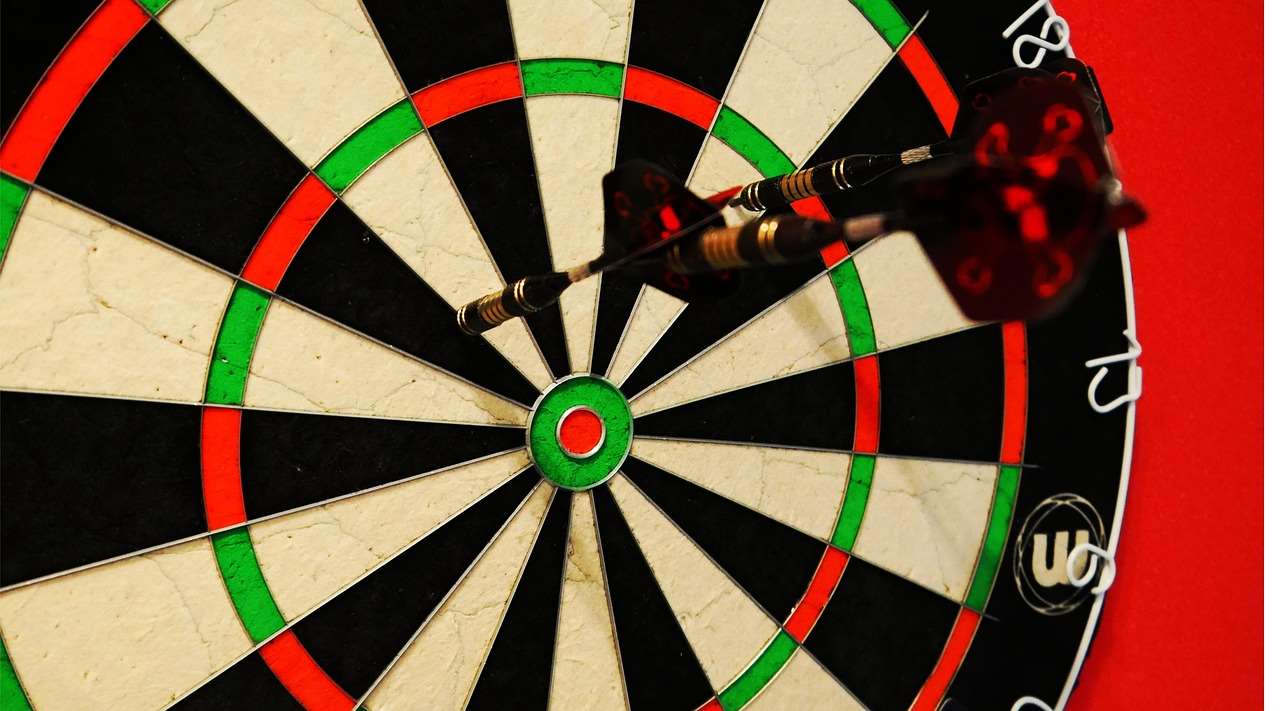Mastering darts calculation is the key to consistently winning games, allowing you to strategically plan your throws and optimize your checkout opportunities; without solid maths, you will not be able to check out properly. This article will break down everything you need to know, from basic scoring to advanced checkout strategies.
⚠️ Still Using Pen & Paper (or a Chalkboard)?! ⚠️
Step into the future! The Dart Counter App handles all the scoring, suggests checkouts, and tracks your stats automatically. It's easier than you think!
Try the Smart Dart Counter App FREE!Ready for an upgrade? Click above!
Understanding Basic Darts Scoring
At its core, darts calculation revolves around simple addition and subtraction. The dartboard is divided into numbered sections from 1 to 20, along with a bullseye worth 50 points and a single bull worth 25 points. Each section also has single, double, and triple areas. A dart landing in the double area of a number doubles its value, while a dart landing in the triple area triples its value.
Therefore, if you hit a triple 20 (T20), you score 60 points. A double 19 (D19) scores 38 points. Hitting the bullseye scores 50 points. Remember, the primary goal in games like 501 is to reduce your score to zero, and you must finish on a double or the bullseye. Effective scorekeeping is therefore paramount.
Newer players should focus on hitting the larger single areas initially before attempting doubles and triples. Consistency in hitting the single numbers (like the 20 or 19) is more valuable than haphazardly aiming for triples and missing completely.

Advanced Darts Calculation: Checkout Strategies
Once you understand the basic scoring system, the next step is to learn checkout combinations. This is where strategic darts calculation becomes crucial. Knowing which numbers to aim for to leave yourself with a double or the bullseye finish is key to winning. Many players start by memorizing common checkouts.
Here are a few frequently used checkout combinations:
- 170: T20, T20, Bullseye
- 167: T20, T19, Bullseye
- 164: T20, T18, Bullseye
- 161: T20, T17, Bullseye
- 160: T20, T20, D20
- 100: T20, D20
- 81: T17, D15
- 40: D20
- 32: D16
- 20: D10
These are just a few examples, and there are countless other checkout combinations. The best way to learn them is through practice and experience. Several online resources and apps, like Practice darts app with scoring, can help you practice different darts checkout routes.
A useful strategy is to learn to leave yourself with a simple checkout, such as 32 (D16) or 40 (D20), whenever possible. This reduces the pressure and increases your chances of finishing the game efficiently. Don’t always go for the highest possible score; consider the numbers that will leave you on a favorable double.
The Importance of “Out Charts”
Many dart players rely on “out charts” or “checkout charts.” These charts provide a quick reference for various checkout combinations. They can be invaluable during a game, especially when you are under pressure and need to make quick decisions. While memorization is beneficial, having a chart handy can significantly improve your checkout accuracy and speed.
You can find numerous free out charts online. Print them out and keep them with you when you practice. Over time, you will naturally memorize the most common checkouts. You can find great products with darts checkout rug.
Mental Darts Calculation Under Pressure
One of the most challenging aspects of darts is performing darts calculation under pressure. The tension of a close game can make it difficult to think clearly and accurately. This is where mental preparation and practice come in. You need to train your mind to remain calm and focused, even when the stakes are high.
Here are some tips for improving your mental game:
- Practice regularly: The more you practice, the more comfortable you will become with different checkout combinations. This will help you react quickly and confidently in a game situation.
- Visualize success: Before each throw, visualize yourself hitting the target you are aiming for. This can help you focus your mind and improve your accuracy.
- Stay calm: If you miss a shot, don’t get discouraged. Take a deep breath and refocus your attention on the next throw.
- Develop a routine: Having a pre-throw routine can help you stay focused and consistent, even when you are under pressure.
Learning to handle pressure is just as important as mastering the technical aspects of darts calculation. Don’t underestimate the power of mental fortitude in achieving your goals.

Using Technology to Improve Your Darts Calculation
In today’s world, technology can be a powerful tool for improving your darts calculation skills. Several apps and websites are designed to help you practice different checkout combinations and track your progress.
Some popular options include:
- DartCounter: A comprehensive app that allows you to track your scores, practice checkouts, and compete against other players online.
- My Dart Training: Another excellent app with various training modes and features to help you improve your game.
- Web-based checkout calculators: Numerous websites offer checkout calculators that can quickly show you the best possible combinations for any given score.
Using these tools can help you identify your weaknesses and focus your practice on specific areas. They can also provide valuable insights into your performance and help you track your progress over time.
Common Mistakes in Darts Calculation
Even experienced players make mistakes in darts calculation from time to time. Some common errors include miscalculating scores, forgetting checkout combinations, and misreading the dartboard. Here are some tips on avoiding these errors:
- Double-check your scores: Always double-check your score after each throw to ensure accuracy.
- Memorize common checkouts: The more checkouts you have memorized, the less likely you are to make a mistake.
- Pay attention to the dartboard: Make sure you accurately identify which section of the dartboard your dart landed in.
- Take your time: Don’t rush your calculations, especially when you are under pressure.
By being mindful of these common mistakes, you can significantly reduce the risk of making errors in your darts calculation.

Different Variations of Darts and Their Scoring
While 501 is the most common form of darts, other variations exist, each with its own unique scoring rules. Understanding these variations can make you a more versatile player.
- 301: Similar to 501, but players start with a lower score.
- Cricket: A strategic game where players aim to close out specific numbers and the bullseye.
- Around the Clock: Players must hit each number on the dartboard in sequence, starting with 1 and ending with 20.
Knowing the rules and scoring systems for these different variations can add variety to your practice and help you develop a more well-rounded skillset. Keep your dart shaft clip handy when practicing.
Practicing Your Darts Calculation Skills
The key to mastering darts calculation is consistent practice. Here are some effective ways to practice your skills:
- Checkout practice: Spend time practicing different checkout combinations. Use online resources or apps to generate random scores and challenge yourself to find the best checkout route.
- Game simulation: Play practice games against yourself or other players. This will help you develop your mental game and learn to perform under pressure.
- Targeted practice: Identify your weaknesses and focus your practice on those specific areas. For example, if you struggle with double finishes, spend extra time practicing them.
Consistency is key. Even short, regular practice sessions are more effective than infrequent, long sessions. Aim for at least 15-30 minutes of practice each day to see significant improvements in your darts calculation skills.

Beyond the Numbers: Strategy and Game Sense
While darts calculation is essential, it’s not the only factor that determines success. Strategy and game sense are equally important. This involves understanding your opponent’s strengths and weaknesses, anticipating their moves, and making smart decisions about which numbers to aim for.
For example, if your opponent is a strong finisher, you might want to play defensively and try to prevent them from getting a good checkout opportunity. On the other hand, if your opponent is struggling, you might want to be more aggressive and try to build a lead.
Developing good strategy and game sense takes time and experience, but it can significantly improve your overall performance. Observing professional dart players and analyzing their decision-making can be a valuable learning experience. Try to predict and remember where is what channel is the darts masters 2024 on.
The Role of Equipment in Darts Calculation
While your mental maths and throwing technique are crucial, the right equipment can also play a role in your darts calculation and overall performance. Choosing the right darts, dartboard, and other accessories can make a difference.
- Darts: Experiment with different weights, shapes, and materials to find the darts that feel most comfortable and accurate for you.
- Dartboard: Invest in a high-quality dartboard that is properly mounted and well-maintained.
- Flights and Shafts: These components affect the dart’s trajectory and stability. Experiment with different types to find what works best for your throwing style.
While equipment alone won’t make you a great dart player, it can help you optimize your performance and improve your consistency. Learn the dartboard jpg dimensions too.

Conclusion: Mastering Darts Calculation for Competitive Success
In conclusion, mastering darts calculation is crucial for any serious dart player. From basic scoring to advanced checkout strategies, the ability to quickly and accurately calculate scores is essential for making smart decisions and maximizing your chances of winning. By practicing regularly, utilizing technology, and developing your mental game, you can significantly improve your darts calculation skills and achieve your competitive goals. Remember to always double-check your scores, memorize common checkouts, and stay calm under pressure. So, pick up your darts, start practicing, and watch your game reach new heights!
Hi, I’m Dieter, and I created Dartcounter (Dartcounterapp.com). My motivation wasn’t being a darts expert – quite the opposite! When I first started playing, I loved the game but found keeping accurate scores and tracking stats difficult and distracting.
I figured I couldn’t be the only one struggling with this. So, I decided to build a solution: an easy-to-use application that everyone, no matter their experience level, could use to manage scoring effortlessly.
My goal for Dartcounter was simple: let the app handle the numbers – the scoring, the averages, the stats, even checkout suggestions – so players could focus purely on their throw and enjoying the game. It began as a way to solve my own beginner’s problem, and I’m thrilled it has grown into a helpful tool for the wider darts community.